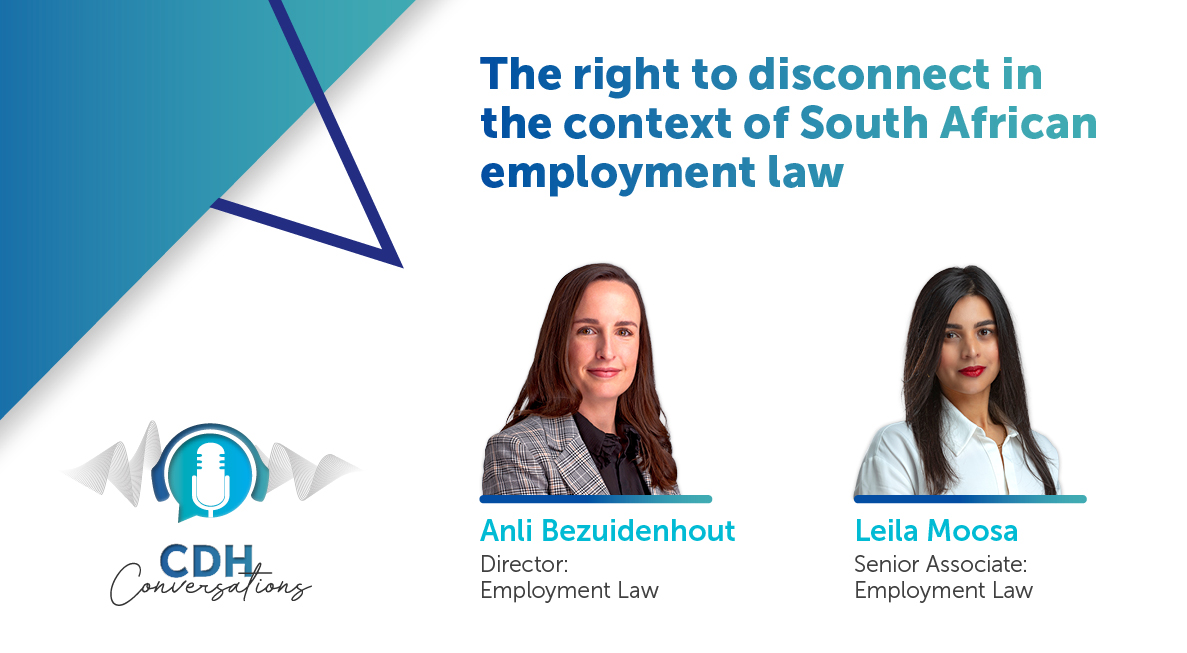Interest-free loans to trusts: Proposed amendments, public comments and National Treasury’s response
Section 7C
Currently, the provision in question states that s7C applies in respect of any loan, advance or credit made by a natural person, or a company in relation to which that natural person is a connected person, as defined in paragraph (d)(iv) of the definition of “connected person” in s1 of the Act, to:
- a company, if at least 20% of the equity shares in that company are held, directly or indirectly, by the trust referred to in s7C(1)(i) of the Act, or by a beneficiary of that trust; or
- a company, if at least 20% of the voting rights in that company can be exercised, by the trust referred to in s7C(1)(i) of the Act, or by a beneficiary of that trust.
The proposed amendment will change the above italicised words so that the provision will apply where 20% of the equity shares are held by a trust alone or jointly with any person that is a connected person in relation to that trust, or where 20% of the voting rights in that company can be exercised alone or jointly with any person that is a connected person in relation to that trust.
The Draft TLAB also proposes that this amendment will apply retrospectively from 19 July 2017.
Public input received and response from National Treasury
National Treasury (NT) published a response document dated 12 September 2018 (Response Document), containing its responses to the public input received on the Draft TLAB and the draft Tax Administration Laws Amendment Bill, 2018. Regarding s7C, it also received public input. The Response Document sets out the input received and NT’s response thereto. The first comment referred to in the Response Document states that the proposed 2018 amendments seek to clarify the scope of application of the anti-avoidance measure in respect of companies held by trusts, but that the formulation of the proposed 2018 amendments result in the rules applying even though the trust does not hold any shares at all. The proposed wording does not achieve the intended outcome that the trust should at least hold a share in the company as it can mean that if the connected person of the trust (ie the beneficiaries of the trust and their relatives) collectively hold at least 20 per cent of the shares of the company, the anti-avoidance measure applies. Changes should be made to ensure that the rules apply where the trust itself at least holds a share in the company. In response to this comment from the public, NT stated that in its view, the comment was misplaced as the proposed wording of the Draft TLAB already had this intended effect.
The second comment was that the term “connected person” in relation to a trust includes persons who are “connected persons”, for example relatives, in relation to the beneficiaries. The proposed wording in the Draft TLAB therefore broadens the proposal considerably and should be restricted to beneficiaries of the trust. NT responded that it partially accepts this comment and explained that the introduction of the anti-avoidance measure was a result of family members structuring their affairs using trusts and companies that involved various family members in order to transfer assets or returns from those assets among themselves. Avoidance is then facilitated through beneficiaries holding shares in companies in which the family trust holds shares. In some instances a close relative of the beneficiary (ie father, uncle or son) that is not a beneficiary may hold shares in the company. However, NT noted that the current definition of “connected person” in relation to trusts includes relatives or beneficiaries and that the term “relative” is defined for purposes of the Act. Whilst the scenarios envisaged under the anti-avoidance measure includes relatives that are not beneficiaries of a trust, NT acknowledges that the current definition of a relative that includes all relations within the third degree of consanguinity may be too wide. A definition of a relative will be considered for purposes of these rules to limit it to relatives within the second degree of consanguinity.
The last comment related to the anti-avoidance measure triggering a deemed donation on the difference between interest actually charged (if any) and the interest that would have been charged had interest-free or low interest loans been subject to interest at the “official rate of interest”. The comment noted that some technical questions remain unanswered around this determination of a deemed donation. It is therefore proposed that a calculation method be prescribed in the legislation for deemed interest. The comment noted that s64E(4)(d) of the Act has a similar problem and that it may be appropriate to rather amend s7D of the Act, which applies to the calculation of all deemed interest so that it covers both the in duplum rule and the calculation method. The comment concluded by noting that current SARS practice for s64E of the Act seems to be applying daily simple interest on the daily balance outstanding and it proposes that this method be used.
NT accepted this comment and stated in the Response Document that clarifications around the use of the “official rate of interest” as a benchmark across the various provisions of the Act will be made. Similar to the practice around s64E determinations, daily simple interest will be used.
We now await the release of the revised Draft TLAB, which will be amended to incorporate the feedback given by NT.
The information and material published on this website is provided for general purposes only and does not constitute legal advice. We make every effort to ensure that the content is updated regularly and to offer the most current and accurate information. Please consult one of our lawyers on any specific legal problem or matter. We accept no responsibility for any loss or damage, whether direct or consequential, which may arise from reliance on the information contained in these pages. Please refer to our full terms and conditions. Copyright © 2026 Cliffe Dekker Hofmeyr. All rights reserved. For permission to reproduce an article or publication, please contact us cliffedekkerhofmeyr@cdhlegal.com.
Subscribe
We support our clients’ strategic and operational needs by offering innovative, integrated and high quality thought leadership. To stay up to date on the latest legal developments that may potentially impact your business, subscribe to our alerts, seminar and webinar invitations.
Subscribe




